By Dick Ruzzin
What drives a company like De Tomaso or Chevrolet to demonstrate its soul by creating cars that will hopefully outperform those of its peers? To put its image on the line and be confident that it will win? To challenge what is considered the best in all the world and not be afraid?
This is really a story of two companies, one very small and one very big. Fifty years separate the two landmark mid-engine efforts, the Mangusta and the C8 Corvette. For Alessandro de Tomaso, it was very personal, as he wrote in the Mangusta Owners Manual. Fortunately, in the history and heritage of General Motors and Chevrolet, there remains a spark called Corvette, which still displays the very essence of what an automobile is about.
Herein, we examine both cars from an owner’s perspective.
Over fifty years ago, through a series of unusual circumstances, I became the owner of the only De Tomaso Mangusta (of 401) built at the factory with a 375HP Corvette engine, not a 215HP Ford like most of the others. I still own that car, 8MA670, and have lived with it, worked on it, driven it, showed it and protected it all of that time. I now consider it a treasure.
When I first brought the Mangusta home, I was in disbelief that I actually owned it. It took months for me to get used to driving it and seeing it in my garage. I was nervous about it. It was considered the most beautiful car design on the planet at the time and it influenced every car design and car designer in the world. The fact that it was mid-engined was simply not as important as the way it looked.
In early 2019 I was hearing rumors that a new mid-engine Corvette was really supposed to be produced – “This time.” In 2014, I had bought a C7 convertible that was originally supposed to have mid- engine architecture. GM’s bankruptcy reduced their budget so the Corvette team had to fall back on rear wheel drive. The result was a fantastic rear drive car. I would have been happy to keep mine forever as it was wonderful. I then decided that if Chevrolet built a mid-engine car that it must be truly exceptional and that I had to own one.
I had no idea how inadequate the word ‘exceptional’ would be in describing the new C8 Corvette. I ordered one in November of 2019 and number 01742 arrived in my driveway on my birthday during the second week of June in 2020. Later that night, looking at it in my garage I was intimidated, just as I had been when I brought the Mangusta home over fifty years earlier.
Both cars embody the values of the countries where they were created, the Mangusta is 1969 Italian, and the Corvette is 2020 American. The Mangusta is about the past and the Corvette is about the future.
This is my story of owning both cars at the same time and comparing them for you. Who would have ever thought that I would have been so lucky?
DE TOMASO AUTOMOBILI
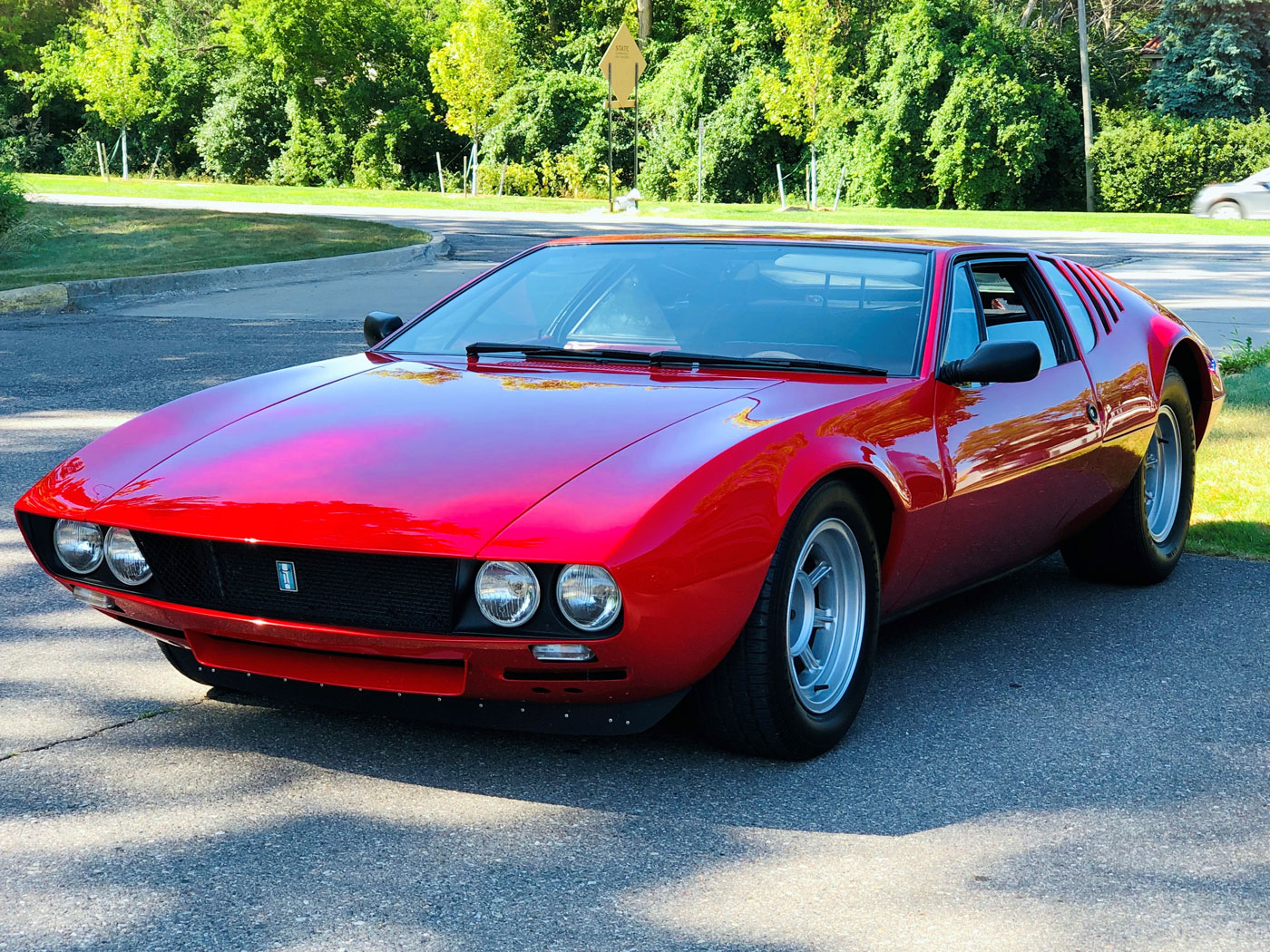
From Italy, the De Tomaso Mangusta, a design icon. Clear, harmonic and emotional design, when once seen, remembered forever.
The De Tomaso story is well known to the VeloceToday.com readership. Alessandro de Tomaso was not an engineer; he was a mechanic who became a race car driver and then quickly moved to race car builder. He was known to be an innovator, one who moved on quickly to “new things”. He had an amazing career of great accomplishment, eventually owning several Italian car and motorcycle companies. His first car built in series was the low volume Vallelunga. It was small and mid-engine like his racecars. Then, utilizing the Ford V8 engine, the Mangusta was introduced in 1966. The deal with Ford for the engines led quickly to the Ford Pantera.
THE FIRST CHEVROLET CORVETTE
In Italy shortly after Ferrari started producing road cars and before Lamborghini emerged a Corvette heritage was evolving within General Motors and Chevrolet in the United States. If you closely examine the new C8 Corvette Stingray emblem you will see a small Chevrolet Bowtie. That bowtie, in the emblem from the Corvette’s beginning, it was created by William C. Durant in 1913, a co-founder of the Chevrolet Motorcar Company. His partner, Louis Chevrolet, was a race car driver who also aspired to manufacturing his own cars. His great competitive racing spirit still lives on at Chevrolet and continues to influence its future.
Conceived by GM’s first car designer Harley Earl, the Corvette was embraced by Chevrolet after World War Two as a British import fighter . It started in 1953 with the straight six cylinder, but the soon-to-be iconic Chevrolet Small Block V8 engine as designed by Ed Cole was in the wings, and when Zora Arkus Duntov invited himself to be part of the C2 Team, the V8 became a reality. Duntov’s high speed runs at Daytona Beach shocked the emerging sports car world in America as the new Corvette exceeded 150MPH, performance far beyond the twice the price Jaguar XK140s and inspiring the XKE. Like Earl, Duntov was a racer, even racing at le Mans after starting at General Motors, and as time went on, he steadily advanced the Corvette’s dynamic performance. It soon was recognized deservedly as America’s only true sports car.
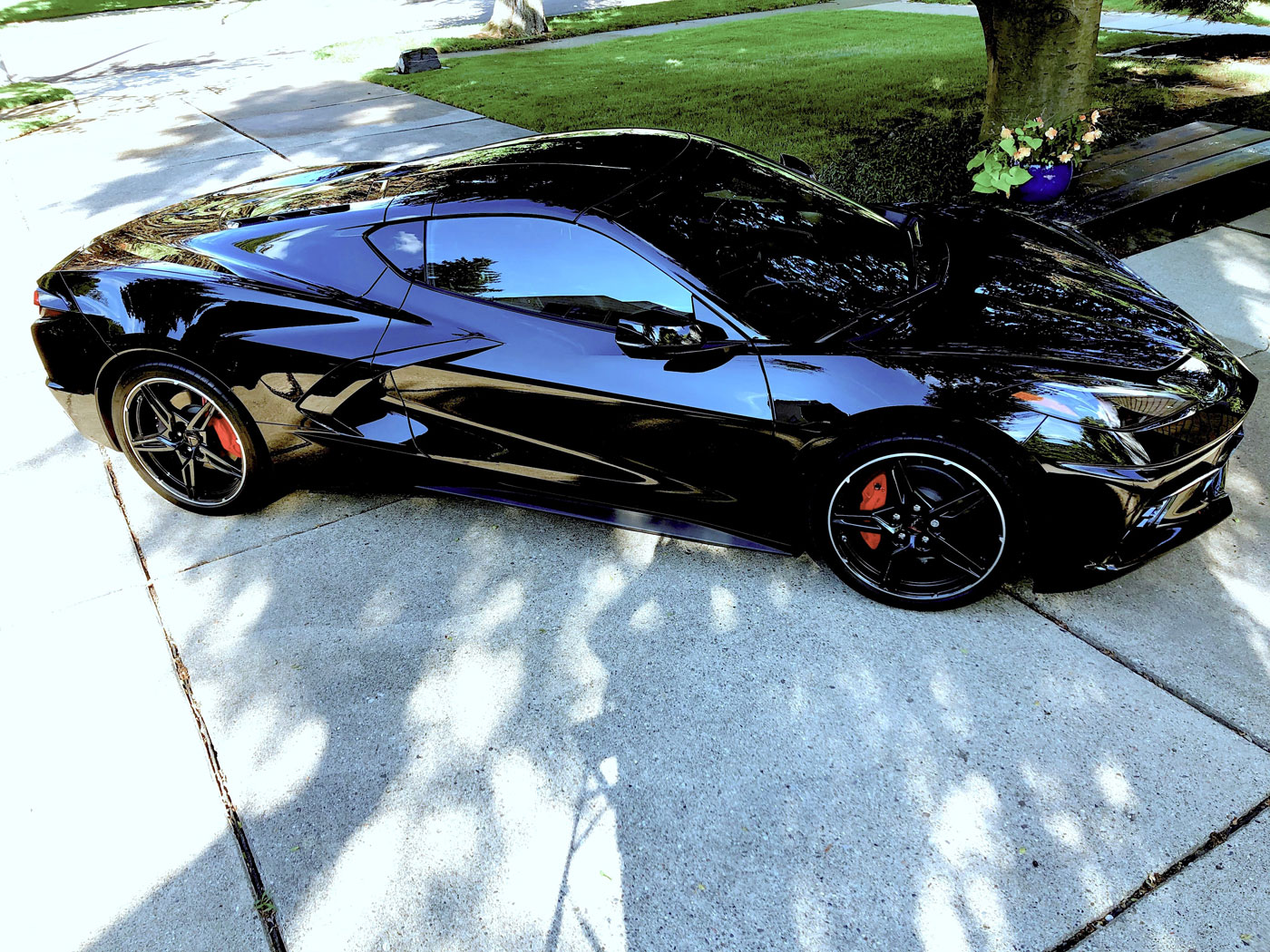
From America, the 2020 Chevrolet C8 Corvette, challenging the best in the world in the showroom and on the race track. The design of the car has received enthusiastic acclaim.
From a business standpoint the Corvette’s early performance was fitful. But from the very beginning many at General Motors had, and still do have, a special feeling for the Corvette. Through good and bad times, it survived true to its heritage of offering outstanding performance at a great price. The C8 still has that ingrained value but that is no longer the reason to buy one. Now it stands completely on its own as a world-class high-performance sports car that takes a back seat to no other brand. Soon it will be sold around the world with both right and left hand drive; the image created by the years of winning Corvette racecars has successfully paved the way, competing and winning against the best the world has to offer.
THE DESIGN LANDSCAPE FOR THE MANGUSTA
The De Tomaso Mangusta as designed by Giorgetto Giugiaro was introduced at the 1966 Turin Automobile Show in Italy. At that time the automotive design world was very settled and evolving in an international aesthetic progression. The car received incredible attention because it was so beautiful with exotic mid-engined proportions. What was not understood was the high level of artistic skill required to execute a design that was so simple. It is clearly a piece of automotive art work done by a master and technically almost equal to the Lamborghini Miura, except for its engine.
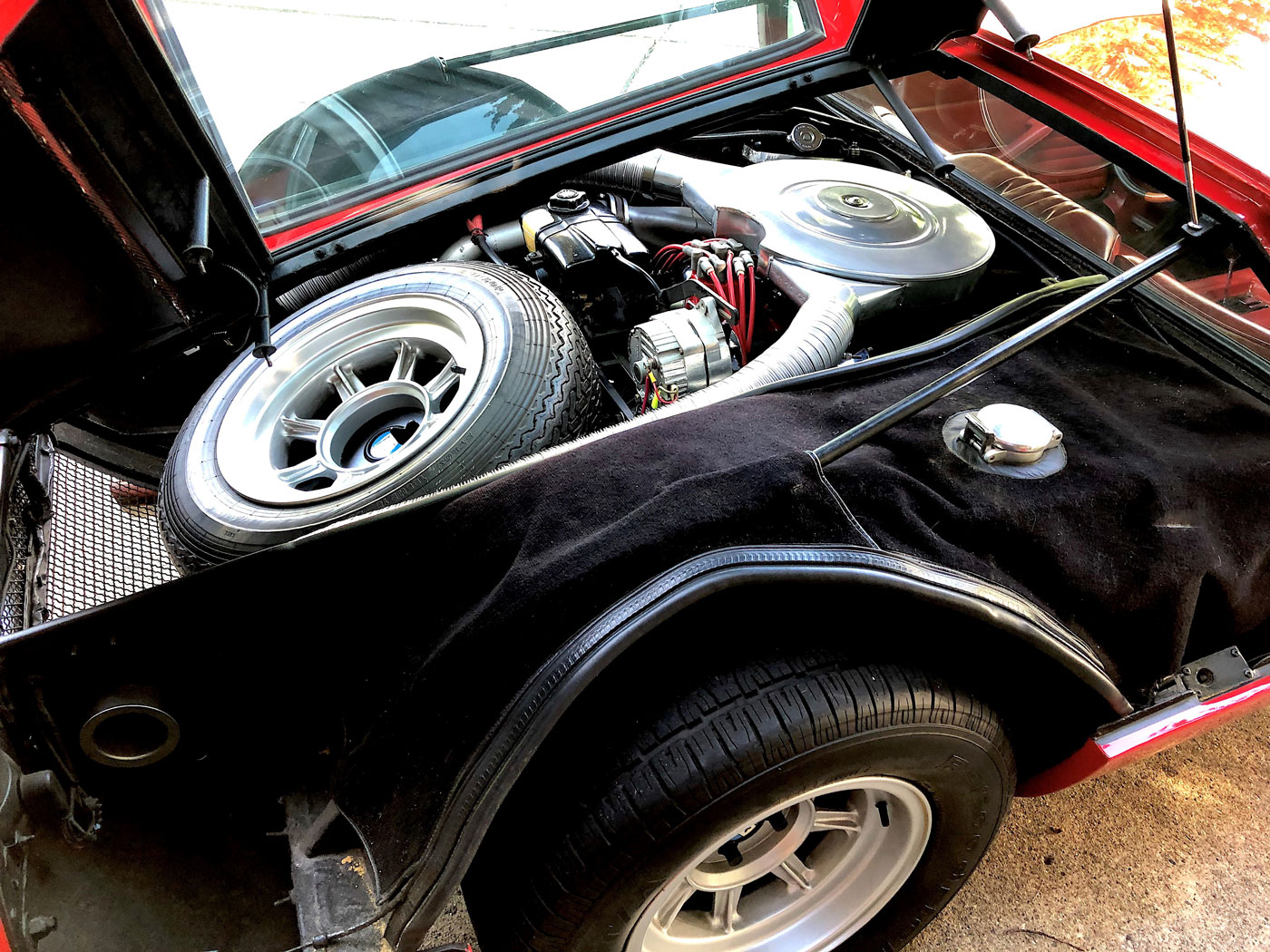
The Mangusta has a midengine racing chassis conceived by Alessandro de Tomaso and Carroll Shelby. Interior and exterior design by Giorgetto Giugiaro and it was conceived as a racecar for the street. Note however, that this particular Mangusta has a small block Chevy engine rather than the standard Ford offering.
The Mangusta was a design leader, an instant icon. No car that has come out since has had so much impact on the way that cars look as there is a very strong line between aesthetic automotive drama and the forces that influence global design cultures.
As I drove my new Mangusta around, people would follow me home, pull over to the side of the road when they saw me coming and when and wherever I stopped there was always some kind of conversation. De Tomaso – “It sounds like a restaurant.” Mangusta- “Strange name, I never heard of it, but it is pretty.” It was red and low and when you opened the rear engine cover there sitting in the engine bay was a 327 Chevrolet Small Block engine. I knew that engine well, I had installed one in my 1952 MGTD when in college. One day in the very near future I would meet Ed Cole, who designed it, and it would be part of my career at General Motors Design for many years. No other engine… No Ferrari, no Maserati, no Porsche or Lamborghini or BMW or Mercedes Benz engine has given more pleasure to more people than the Chevrolet Small Block. Period.
THE DESIGN LANDSCAPE FOR THE C8 CORVETTE
The C8 Corvette Stingray was introduced by Chevrolet sixty years after the first hint of a move to mid-engined architecture. The design world, now global, is moving forward under self-imposed branding rules. The rear wheel drive C7 Corvette introduced six years earlier broke the Corvette design mold and paved the way for the C8. It was instantly embraced, achieving design parity with Ferrari and Lamborghini, the leaders in the mid-engine supercar world. The C8 aesthetic achievement is matched with a GM developed and industry leading aluminum chassis and eight speed transmission.
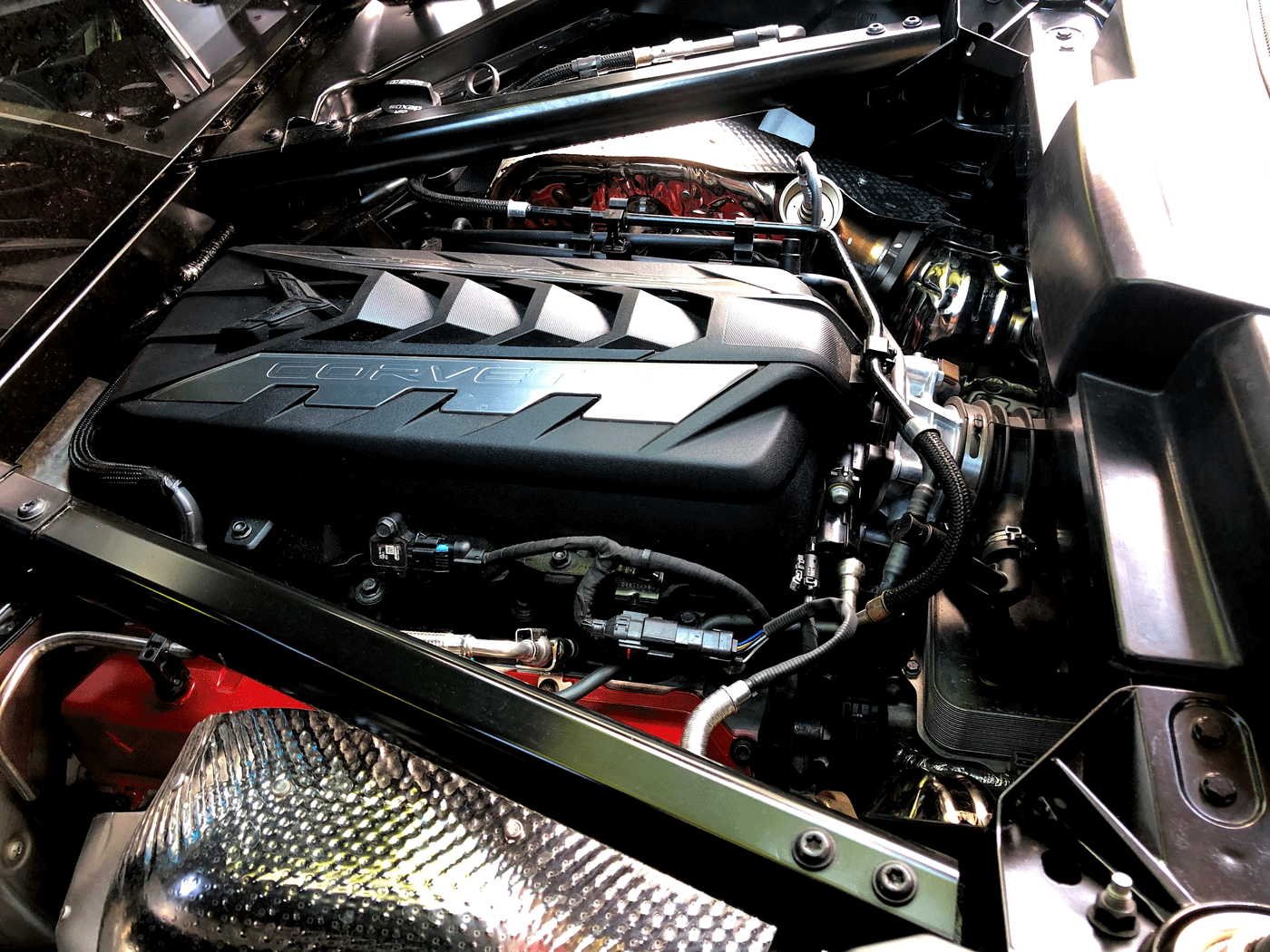
The C8 Corvette engine. Evolved from the original Ed Cole Chevrolet Small Block, it now boasts 490 Horsepower and 460 Lbs. of Torque. It has a cast aluminum chassis and an eight speed transmission.
In the very competitive world of global automobile development rarely does a sea change appear. One evolved over a long period of years and was recently confirmed over the last seven or eight at General Motors and Chevrolet. It was a historic decision for the Corvette Team, a small group of passionate designers and engineers who had nurtured what became an outstanding rear wheel drive platform for years, to then switch to mid-engine architecture. It would be their opportunity to create a new production Corvette that would be like no other. The timing was right; General Motors and Chevrolet would take the opportunity to grow the Corvette brand but the new C8 must accomplish a historic task, to win at racing and also be sold in the USA and around the world against all competition. Even though it was seen coming for sixty years, when it finally arrived it was shocking in a number of different ways. General Motors and Chevrolet were going to start playing with the big boys!
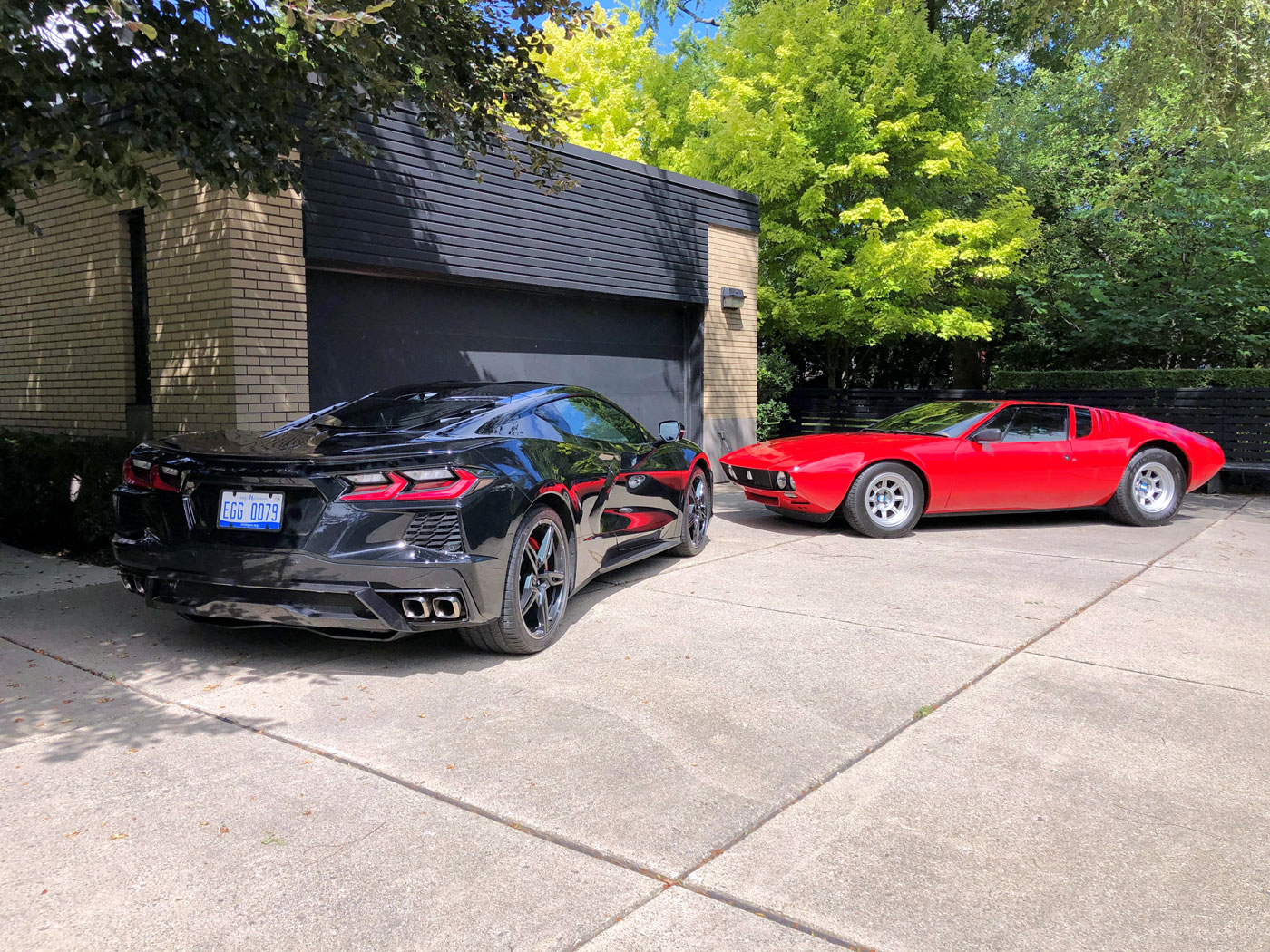
The Mangusta and the Corvette, built fifty years apart with many common functional attributes. Light weight, both cars have leading edge technologies for the times.
COMMON VEHICLE ATTRIBUTES, 1969 MANGUSTA AND THE 2020 CORVETTE
The Mangusta and the C8 Corvette are very similar in many ways but, as expected fifty years after the Mangusta was first sold, science and engineering advances have resulted in very different products. I will try to explain both and also compare what it is like to drive a historic mid-engine car built by De Tomaso to the newly released mid-engine C8 Corvette built by Chevrolet. Both cars feature:
*Mid-engine architecture
*V8 engines
*Longitudinal engine orientation.
*Advanced chassis design with lightweight structures for the times
*Easy entry rockers and a structural center tunnel.
*Both challenge the market with stunning looks.
*Two luggage compartments.
Both mid-engine cars were created with racing instrumentation, electric windows, air conditioning and power brakes as well as unique steering wheels.
The Mangusta weighs in at 2,954 pounds and the C8, fifty years later, with all required safety mandated additives is still only 3,366 pounds. Weight bias for both is about the same, 40 / 60 resulting in excellent traction and zero to sixty times. Astoundingly, they are under 4 1/2 seconds for the Mangusta with the Chevrolet engine and under 3 seconds for the new C8 Corvette. Both are very fast cars.
Opshots, Mangusta
Buy Dick Ruzzin’s Tribute to the Mangusta. bellamangustadesign.com
Softcover
$24.99
Hardcover
$34.99
EBook
$3.9Softcover
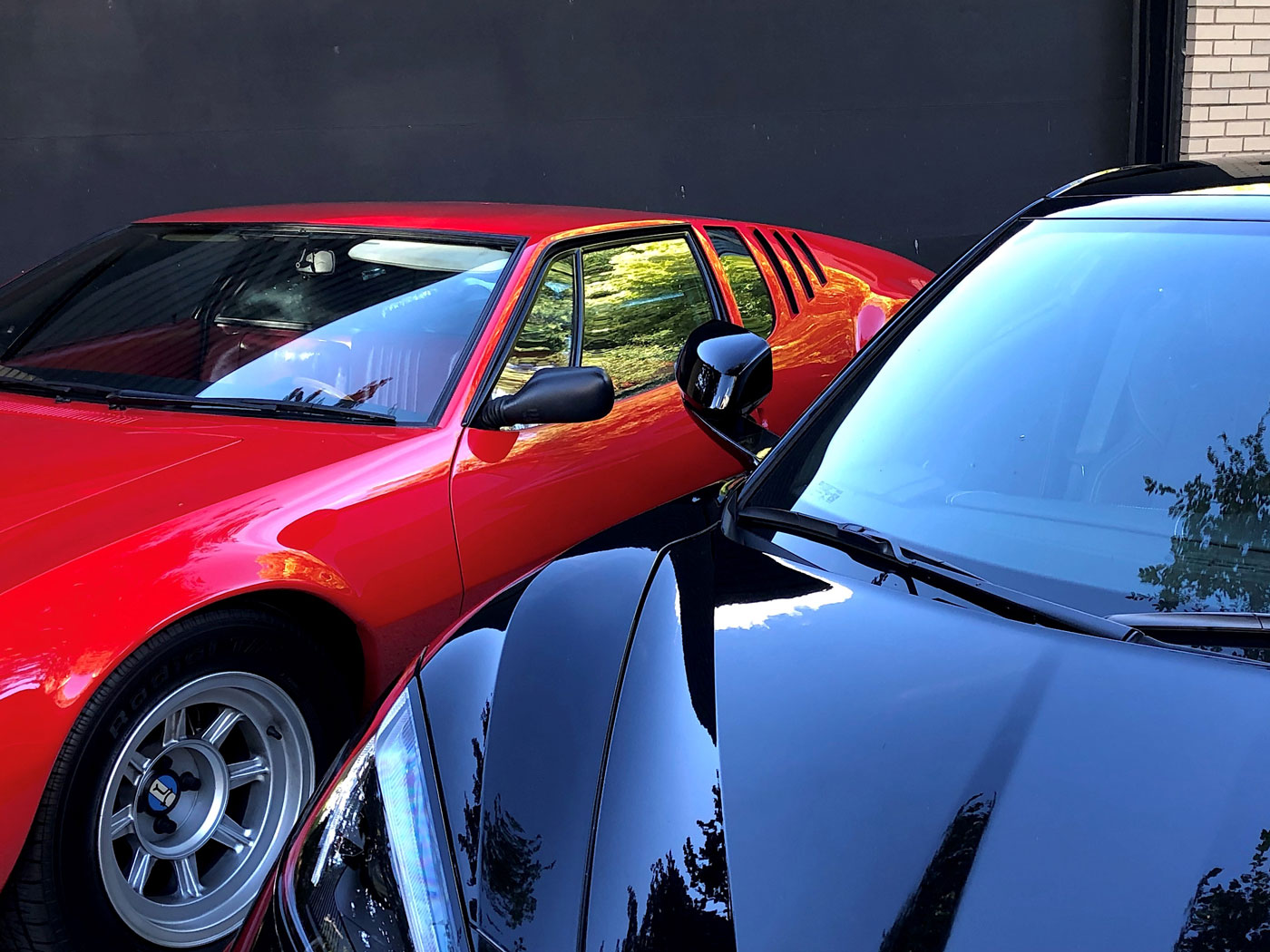
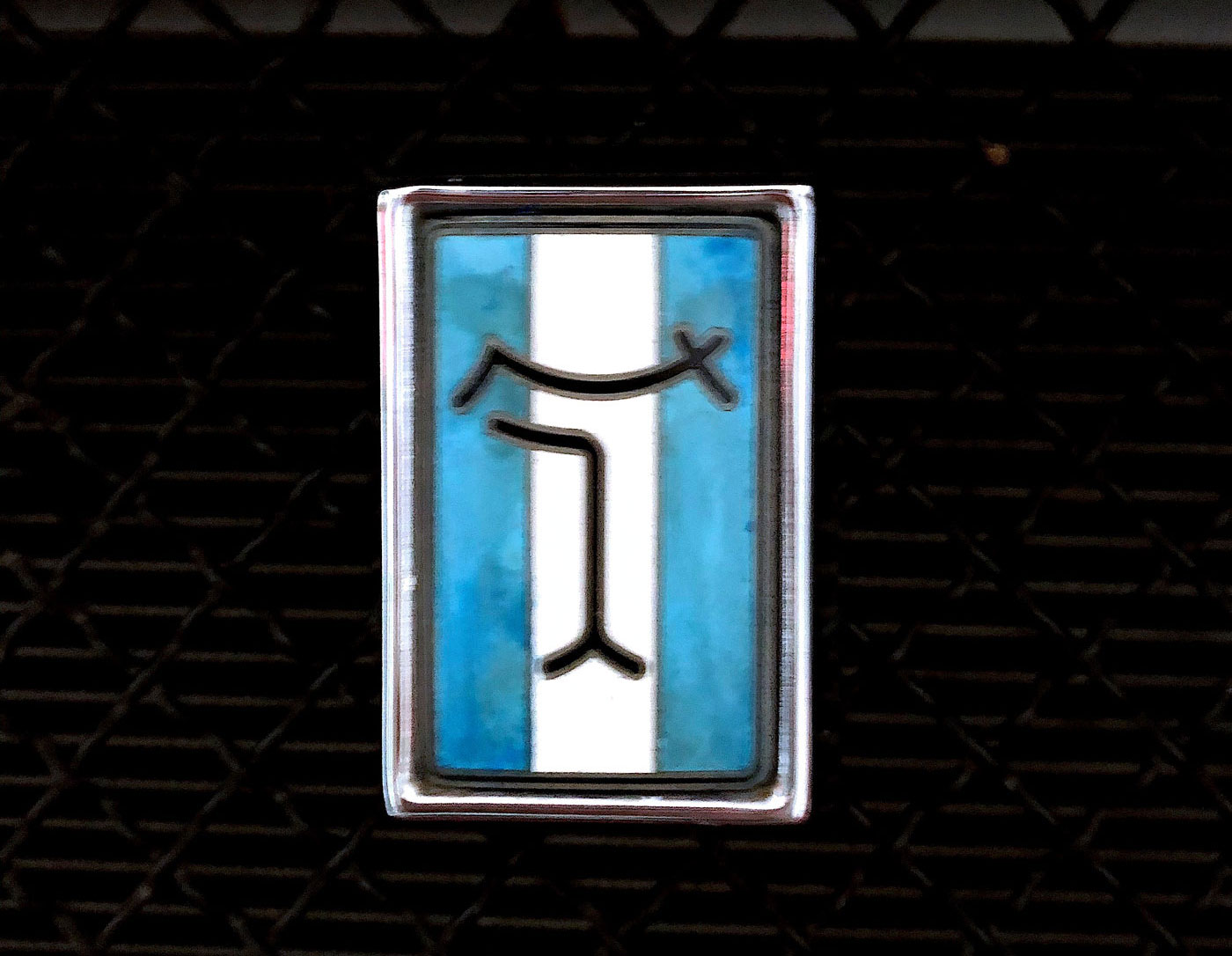
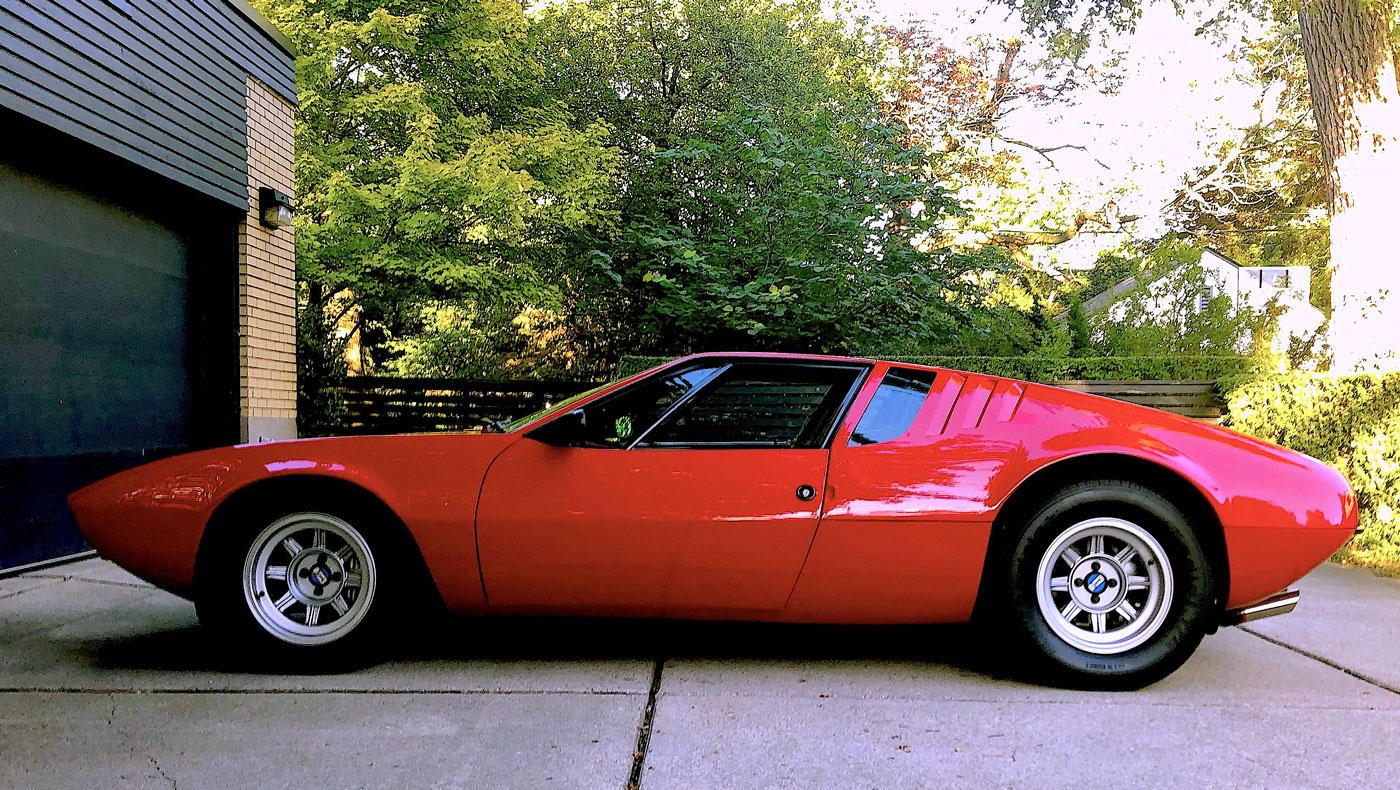
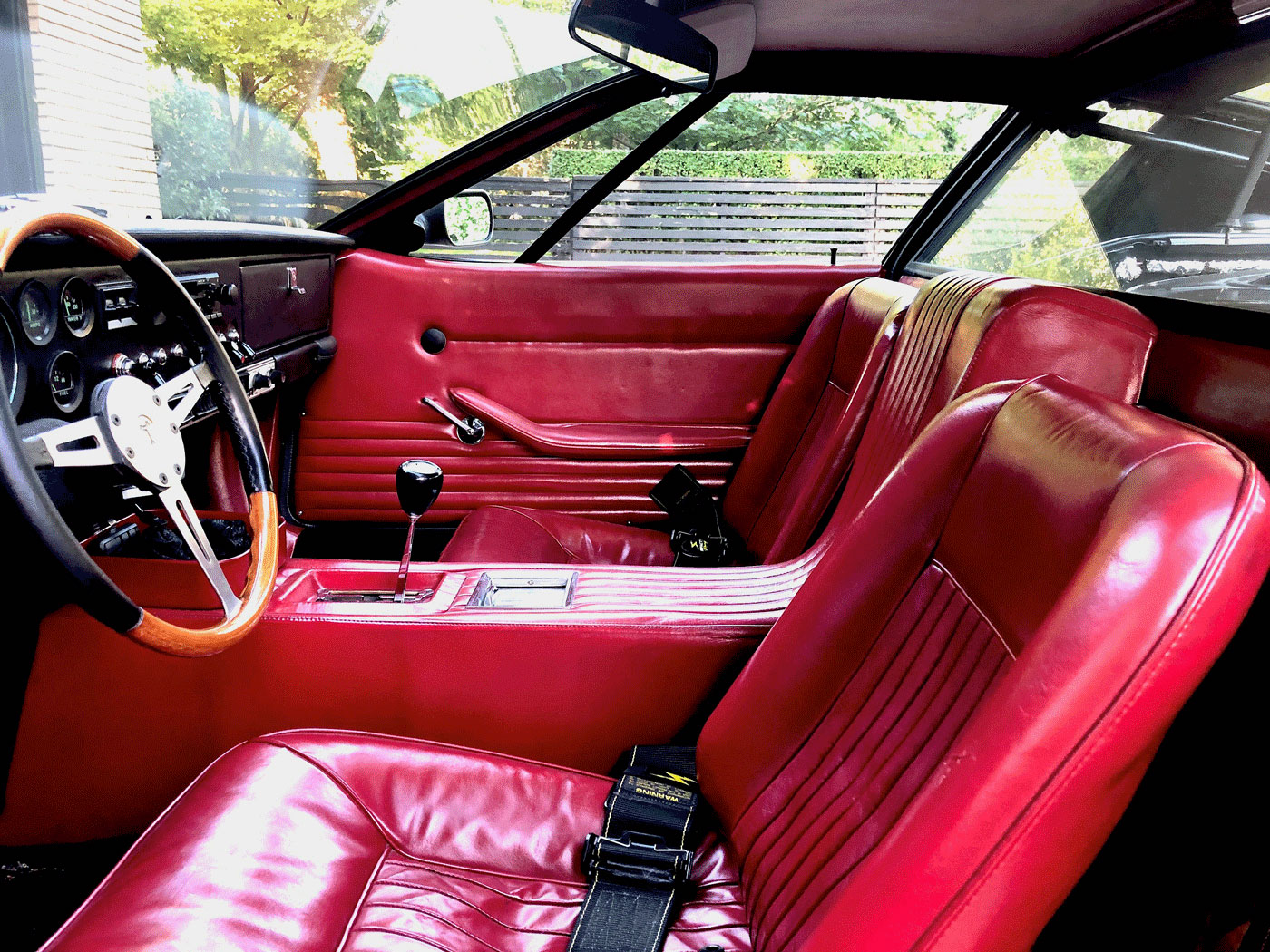
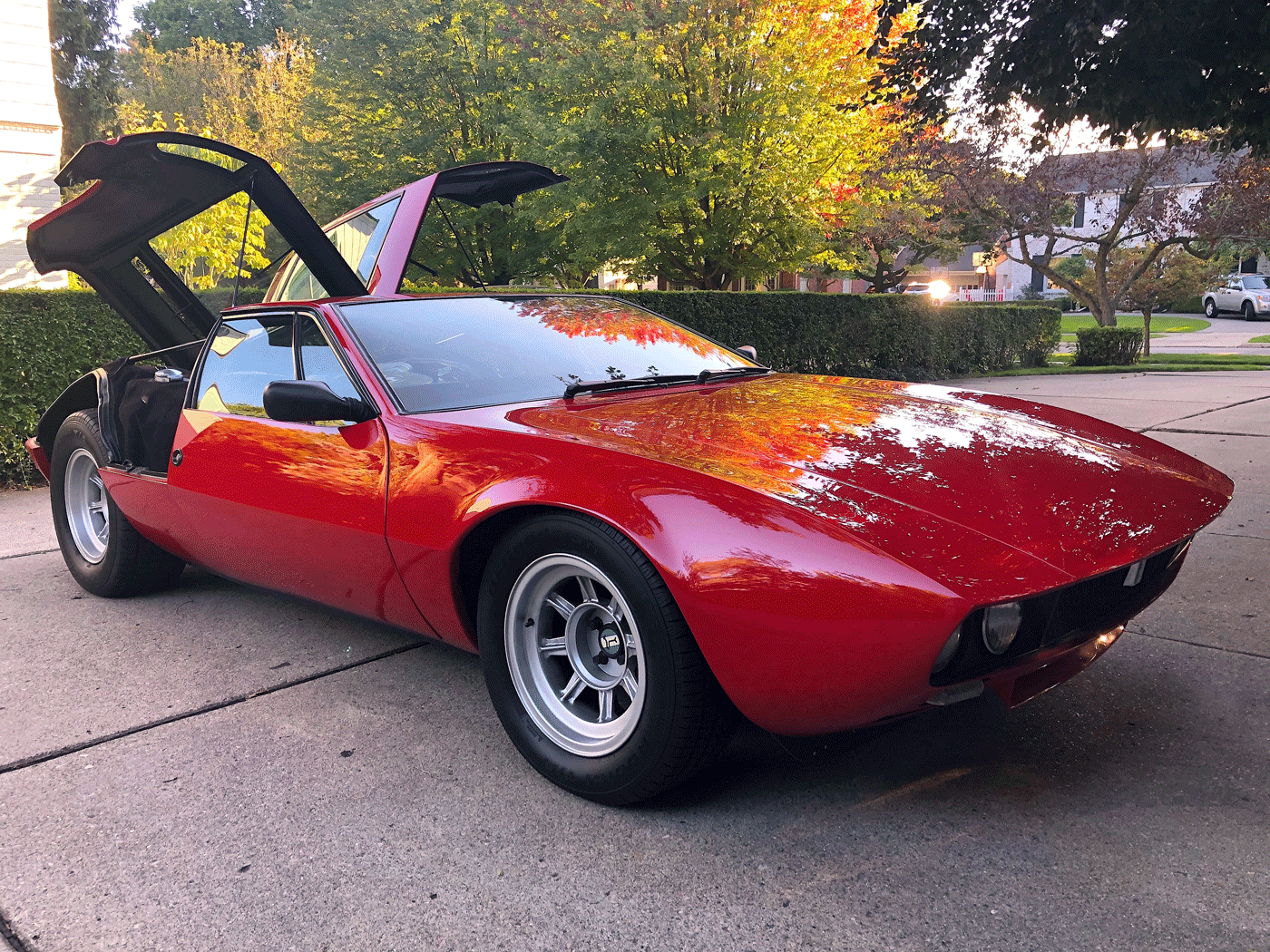
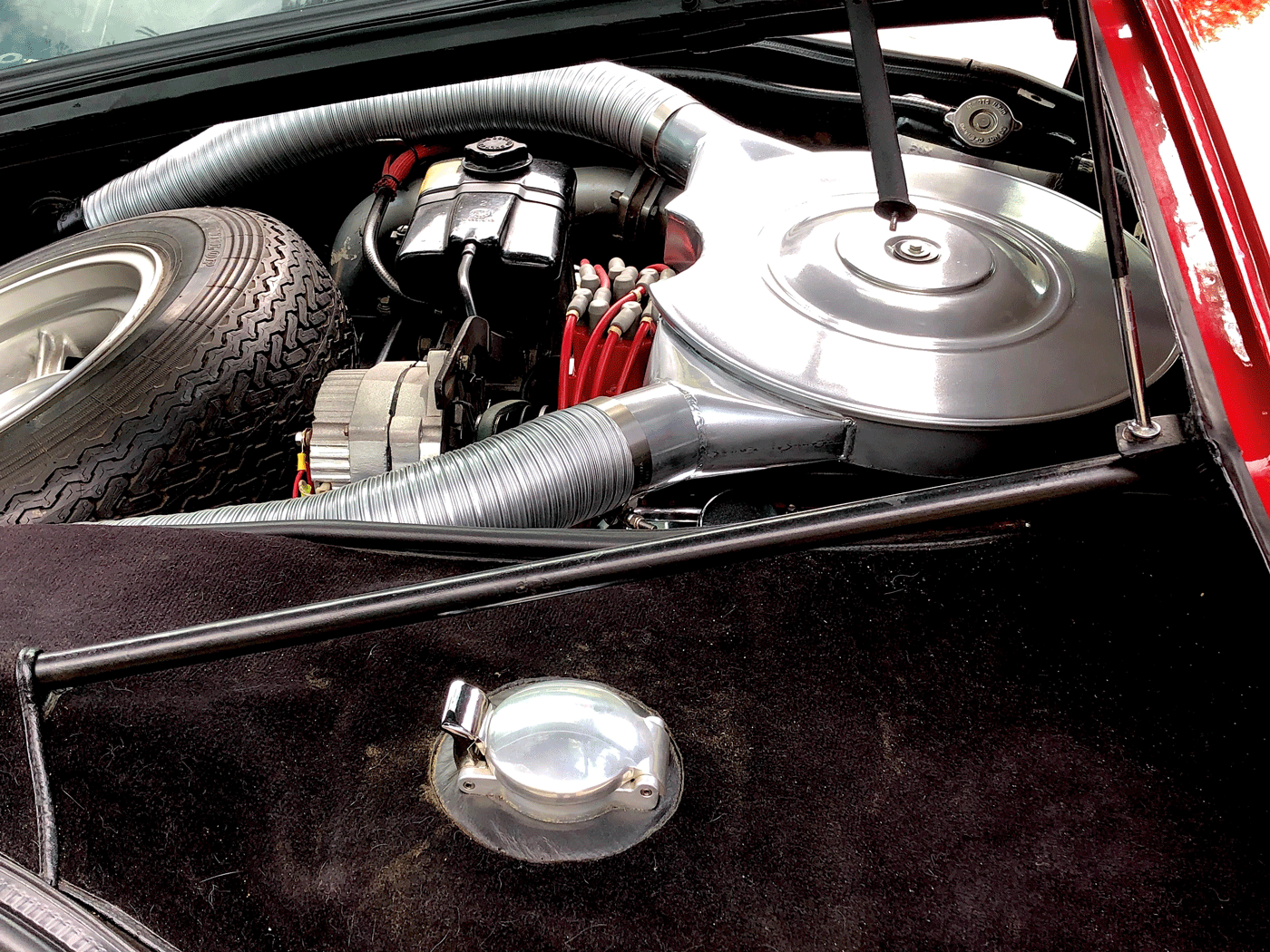

Another great article by Dick. He told me this article was about to be on Veloce Today when we talked on the phone and at the ALFA Romeo event this Summer. Dick is a real treasure chest of automotive history. My late father-in-law Tom Zechin was a Mechanical Engineer who was involved in new drive train designs at GM Tech Center in the era of Earl and Duntov. I loved the stories that he told me. Sadly they weren’t recorded.
Enjoyed your article Dick. Love the photos. The Mangusta is a favorite.
Roy
Excellent article, Dick.
Bruce Kopitz
In the late sixties, Italian design produced such gems as the Miura, the Daytona, the Ghibli and the Mangusta. Over 50 years later, they do not look old-fashioned, they are masterpieces of contemporary design. Some of them were part of a successful exhibition at an art museum in Düsseldorf last year.
This could become the case for the new Maserati MC 20 and hopefully for my F-Type, if I grow old enough to know.
Not having seen the mid-engine Vette so far, I don’t know, but the author’s enthusiasm is refreshing.
Nevertheless, it’s the front-engined Astons which won both GT categories at the recent Le Mans 24, beating mid-engined Ferraris and Porsches. Let’s enjoy the challenge before they all go electric…
The Corvette Team decided long ago due to the virus that traveling to Europe was a bad risk. Therefore they did not go to Le Mans.
The C8.R is brand new yet it has won all races that it has entered, the four IMSA races that have been run so far, against all comers.
Dick Ruzzin
An answer to the question, which one? I would take the Mangusta as it is one of the most beautiful GT cars of its era. The Corvette is too busy from the rear for me, but I wouldn’t turn it down. But a great article.
Dick, this was a great comparison. Thanks for taking the time and sharing your point of view with us.
The rear of the C8 is probably the most misunderstood part of the car. Those who follow racing have noticed that since the early eighties something was going on in the back of racecars that was not there before. Since then the aerodynamic effort has continued and it can be visible not only on the street version of the Corvette but also on comparative versions of Ferrari, Lamborghini and even some other front engine cars that are raced.
It is a known fact that in most cases there is an aerodynamic interaction between the front and the rear of cars of all kinds. Using aero devices on the underside of a car reduces the CDA (Coefficient of Drag times the Frontal Area, CD X A). That in combination with rear wings and diffusers results in a more efficient management of vehicle drag and downforce.
DICK RUZZIN
The shot where the C8 is shown from the rear and the Mangusta front 3/4 shows one of the design flaws of the C8; busy beyond belief. It was as if each designer who worked on it wanted to get their 2 cents worth on the car, this guy doing the tailights, another guy dong the exhaust vents, etc. Where the Mangusta was designed by one man, period. The fact Dick’s C8 is black helps hide the over-busyness from the side. But in the front view you see creases that need not be there. But because the car offers such an improvement mechanically and performance wise, I think the car could be uncluttered, and simplified in the next generation, much as a woman changes her make-up. The form is basically good–it’s just there were, in my view, too many cooks in the kitchen for it to ever emerge as a “pure” unsullied shape as did the Mangusta.
Millions of cars have been produced and even in the early days of automotive design it is a rare car that was designed by one person. Even cars that are credited to one person were very likely reviewed and adjusted by the customer. I was told at the Turin Show in 1971 that de Tomaso “Liked to fool with the designs’. It appears to me that he did not do that with the Mangusta. He probably did not have time.
The C8 Corvette design is a resounding design success that I am reminded of every day that I drive my car, by all kinds of people, young and old. The design is complex. Just looking around at the aggregate automotive offerings today tells you that we are in an evolutionary design period where complexity of theme, form language and graphics are used universally to brand the boxes that we call pick-up trucks and SUVs. People think they all look the same so the fight is on for individual identity. The fight has resulted in a design language across the global industry that is complex with very few exceptions. The Corvette has to live in that world and find it’s own identity in relation to it’s peers..
The Corvette designers had to put the car way out there. It had to appear to belong on the same playing field as Ferrari, Lamborghini and Mclaren and it also had to have it’s own identity that connected to its own visual heritage despite the proprtions that all midengine cars share. That end has been achieved and with superb surface execution.
For a shape so radical, started by the C7, the C8 is very well liked and apparently an outstanding sales success that will go on well into the future. No Corvette that I have driven in the last twenty years has received so much positive reaction to the design. Younger people like the car very much as their time referance points are closer than older people and are not aware of the simpler design statements of the far past.
Is the C8 design complex? Yes it is and people love it.
DICK RUZZIN
A most interesting article, and further, its continued discussion in the comments.
Allow me to join in with a few asides:
Re: styling implied by ground effects.
When I noticed the reference to the 1990s here, relative to broad implementation, I couldn’t help but to be brought back to page 358 of Observations covering LeMans 1964. Here is made reference to arguably the first ground effects racer. The Charles Deutsch DC Panhard LM64 was a supercharged 848cc, 78hp @ 6750rpm racer capable of a sustained 137mph up the Mulsanne, lap after lap twice round the clock, while sipping fuel.
Re: DeTommy
D.R. you were far too gentlemanly in your summation. Having been brought into the fight by Moto Guzzi management to define and present strategies for engineering, product and manufacturing restructure in the mid-1980s he was an…well I’ll just step behind gentleman courtesy as well and say he was detrimentally persimmons in management of Mandello del Lario, and his other operations. The only benefit being that when the P&Ls were presented for an acquisition, it was obvious no one trusted him, as the paperwork reflected all the suppliers required cash. We were amused.
RE: Mangusta. I clearly remember when this car appeared in the pages of Road & Track. It was a revelation. It implied a future intensity of shape, volume, structure and ergonomics that was to become more fully explored and realized by Giorgetto and Aldo Mantovani, as this artist and formidable engineer gave dimension to ItalDesign. I say implied as DeTommy never finished any Mangusta delivered. Kind of like a crate of Lotus Seven bits available from Colin in the same R&T issue.
RE: The C8. It has been more than a generation of anticipation that has preceded this car. And it seems the wait has been well worth it, as the mid-engine concept ‘Vettes before it would not have been the product of a GM quite as capable as it is today. Management focus and manufacturing throughput stand at a level far exceeding the company’s prior incarnations, shall we say.
As regards to looks, I see the contemporary trend line of intensity of cumulative ‘form following function’ detail, which is all made the more apparent by standing next to the understated force of the Mangusta. But having been a multiple Giulia Super owner, which if you attached a leather handle to the roof would look like an overnight bag, yet had a Cd of 0.34, and could drain the blood of a grown man’s face in the passenger seat if well driven along the cliff tops of Highway 1, it is all about the feel from the wheel.
air conditioning in a mangusta? and our 3 cars from the factory were delivered in perfect condition, not as a collection of parts
Come sempre, ottime e interessanti immagini di iconiche vetture.
accompagnato da un esauriente servizio.
I could speak Italian when I was very small and my grandmother lived with us. The meaning of some words came back to me when I worked in Germany and had had meetings at Stile Bertone in Italy about once a month. I wish I knew what the gentleman was saying.
Aside from that, the Mangusta did have air conditioning with a Tecumseh compressor which had a very low performance capability. By the time the freon went to the condensor in the back of the car and then made the long trip to the control unit inside the car the “cool” was almost non existant. My car when delivered was very well finished and complete. After arrival it shared the Executive Garage at GM Design with a newly purchased Maserati Ghibli in yellow and a Lamborghini Espada in silver with a silver interior. Individually they were spectacular but the three together were sensational. The Mangusta and the Ghibli were both Giugiaro designs. People from all over the GM Tech Center came to see them.